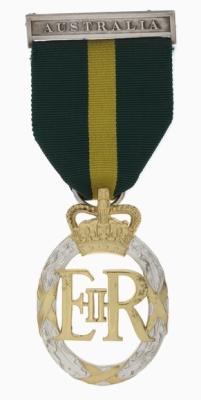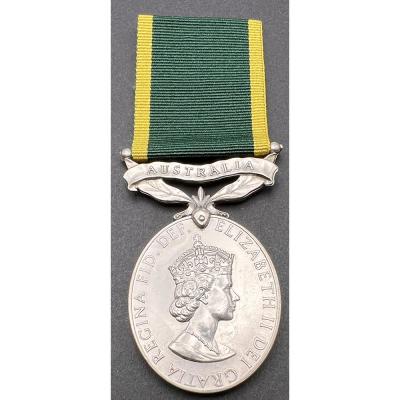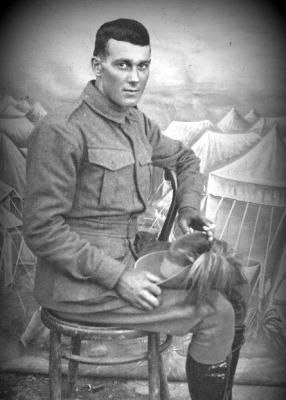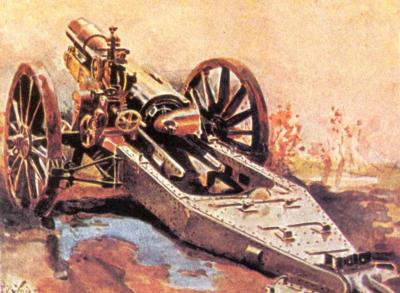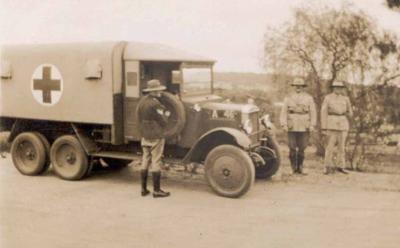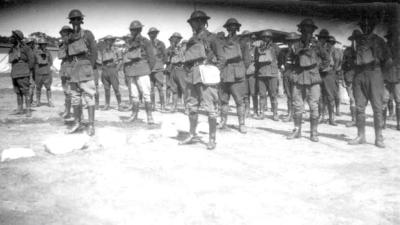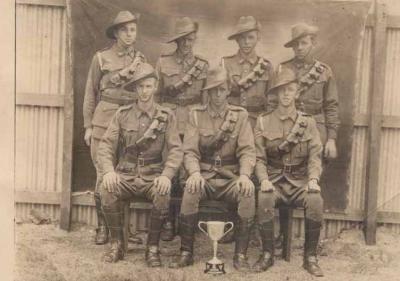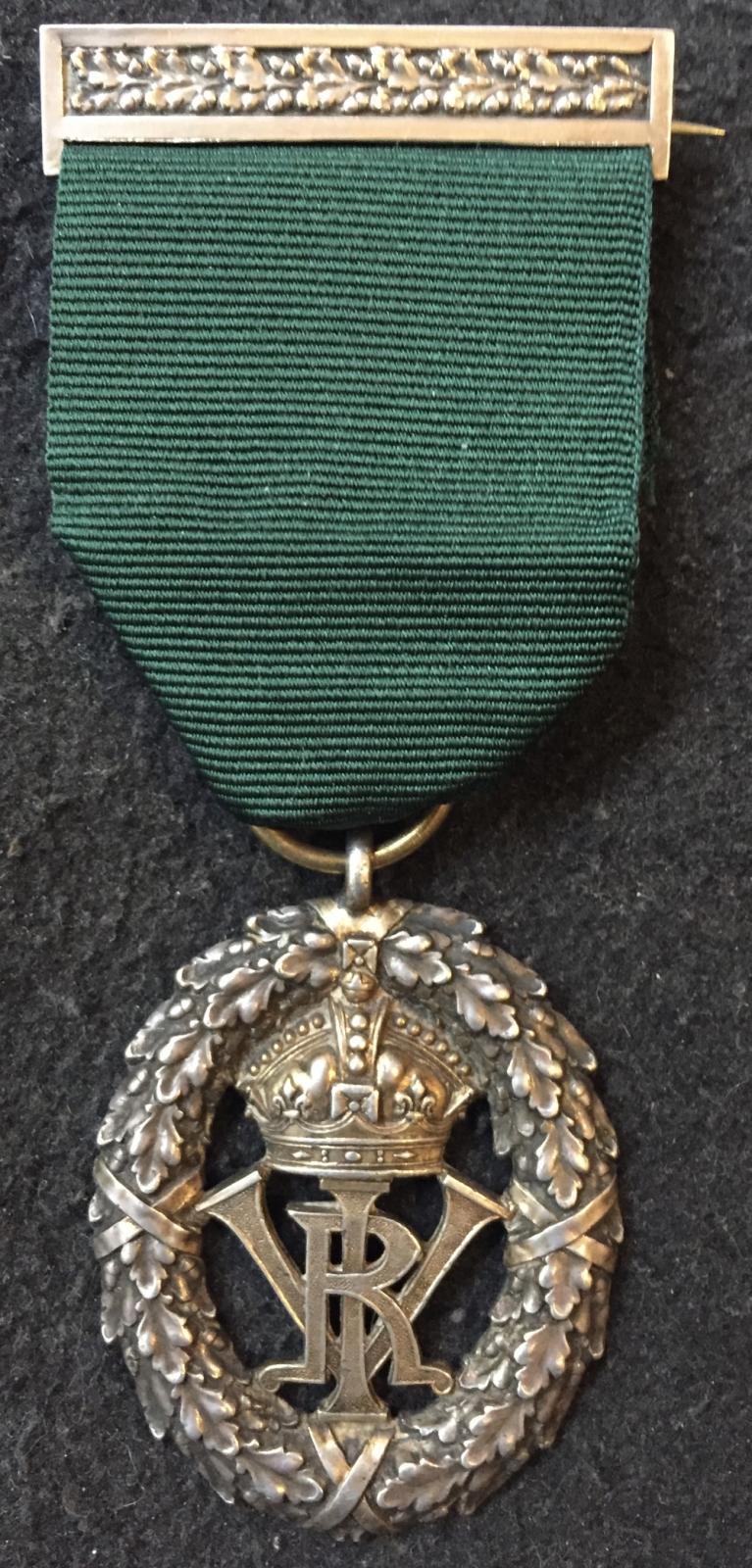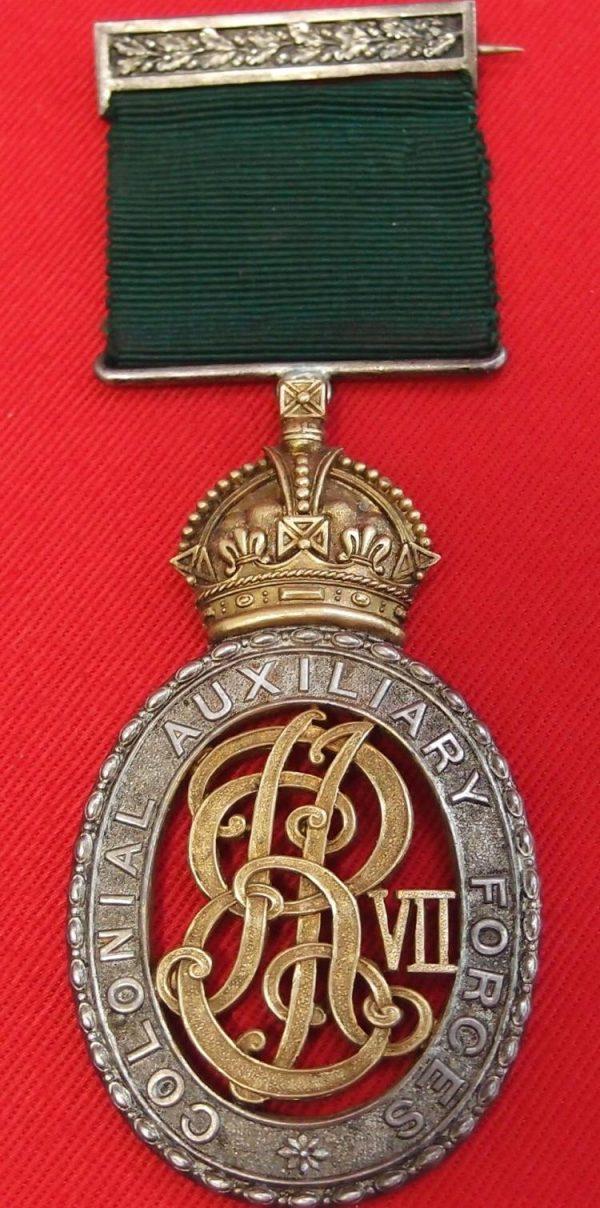Medal - Volunteer Officers Decoration (1892-1901) Colonial Auxiliary Forces Officers' Decoration (1902 - 1930)
The Colonial Auxiliary Forces Officers' Decoration, post-nominal letters VD, was established in 1899 as recognition for long and meritorious service as a part-time commissioned officer in any of the organized military forces of the British Colonies, Dependencies and Protectorates
The obverse is an oval silver band, inscribed "COLONIAL AUXILIARY FORCES" and with the Royal Cypher of the reigning monarch in skeletal form and in silver-gilt in the centre. The oval is surmounted by a silver-gilt Imperial Crown. The reverse is plain. The recipient's name was usually engraved at either the top on the back of the crown or around the circumference of the decoration. The reverse is plain. The recipient's name was usually engraved at either the top on the back of the crown or around the circumference of the decoration.[10]
The ribbon is dark green 32 mm wide and suspended from a silver bar-brooch decorated with an oak leaf pattern. (Both broach and ribbon increased to 38 mm from 1921-27)
Five versions of the decoration are known.[10]
• The centre of the decoration's original version of 1899 has the Royal Cypher "VRI" of Queen Victoria, for "Victoria Regina Imperatrix"
• The King Edward VII version, with his Royal Cypher "ERI VII" for "Edwardvs Rex Imperator VII", was introduced after his succession to the throne in 1901
• The first King George V version, with his Royal Cypher "GRI" for "Georgivs Rex Imperator" as illustrated at the top of the page, was introduced after his succession to the throne in 1910.
• A second King George V version exists, with his Royal Cypher "GRI V" for "Georgivs Rex Imperator V", with the Roman numeral "V" below the cypher "GRI". On this and the third King George V version the crown has two cut-out sections at the top.[11]
• The third King George V version, of which a miniature is illustrated, has the Roman numeral "V" to the right of the cypher "GRI
The Colonial Auxiliary Forces Officers' Decoration, post-nominal letters VD, was established in 1899 as recognition for long and meritorious service as a part-time commissioned officer in any of the organized military forces of the British Colonies, Dependencies and Protectorates. It superseded the Volunteer Officers' Decoration for the Dominions and Colonies
In 1930, the decoration, along with the Volunteer Officers' Decoration and the Territorial Decoration, were superseded by the Efficiency Decoration in an effort to standardise recognition across the British Empire.
Details
Details
From the beginning many military awards for both bravery and long service had distinctions based on class, rank or responsibility. Awards could be issued in different medals, gold, silver or bronze. Their could be a Cross for officers and a medal for other ranks for example Military Cross and Military medal. For long service, officers received a Decoration, soldiers a Medal. Contemporary practice has been to remove rank restrictions for bravery awards while retaining options for the circumstancesof the action. Recognition for exceptional service such as the Oder of Australia retains criteria for the level of service being commended. In general long service medals have no rank distinction only years of service.
In contrast to the previous policies for medals, sacrifice was traditionally been recognised as equally honoured. Rank distinctions are not normally found on Memorials and Honour Boards, the Australian War memorial being a national example.
Medals are displayed in context throughout the Museum. All medals are identified, archivally stored and those not on display are accessible and viewable with prior notice.
Australian Army Museum of Western Australia
Australian Army Museum of Western Australia
Other items from Australian Army Museum of Western Australia
- Medal - Volunteer Long Service Medal to Australia (1895-1902)
- Medal - Efficiency Decoration
- Medal - Efficiency Medal
- Medal - Centenary Medal
- Medal - Civilian Service Medal 1939-45
- World War 1, Australia, Western Australia, 454 NELSON, 10 Light Horse
- World War 1, Australia, Western Australia, 3952 TEEDE, 10 Light Horse
- World War 1, Western Front, France, 6inch BL Howitzer
- Inter War, Western Australia, Rockingham, 3 Field Artillery Brigade, 1938
- World War 2, Western Australia, Melville, 3 Field Artillery Regiment, Gas Traaining, , 1939
- Inter War, Western Australia, Perth, 103 Howitzer Battery, 1938
- Inter War, Western Australia, Northam, 3 Field Artillery Brigade, 1938

